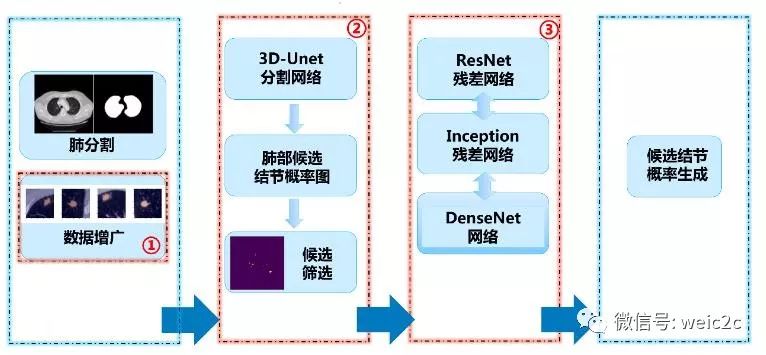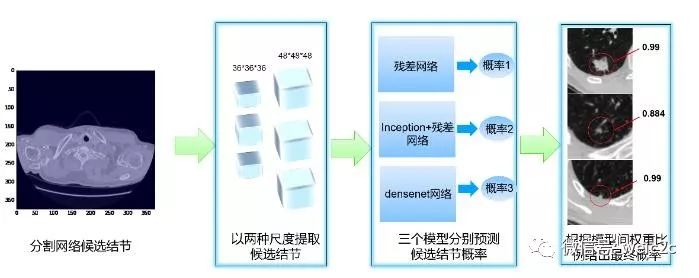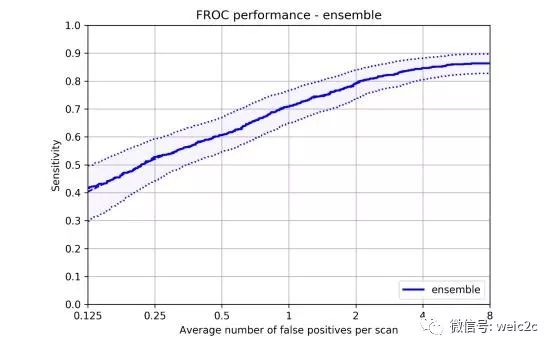Cancer, like the devil in the darkness, gives people fear and despair. Lung cancer, as a type of cancer with the highest morbidity and mortality in our country, injures countless families. Nearly 600,000 people die from lung cancer each year in our country. However, the mortality rate of cancer is closely related to the time when cancer was first discovered. Early lung nodule screening can save countless people from pain and suffering. Prof. Xu Wei, Prof. Ni Bingbing, Prof. Yang Xiaokang, and Prof. Zhu Xiaomeng, etc. of Shanghai Jiaotong University’s Artificial Intelligence Laboratory cooperated with the point of science and technology to use a deep learning lung nodule automatic positioning screening system to effectively detect lung CT. The image contains nodules, ground glass, and other types of nodules, and reduces the occurrence of false positive misdiagnosis, and realizes the desire of “early detection, early diagnosis, early treatment, and early recoveryâ€. This algorithm won the first place in the Tianchi Big Data Competition. This competition has attracted more than 2,000 participating teams across the country. The total pool of prizes is as high as one million. It is for major hospitals, universities, companies, and institutes throughout the society.
The team used convolutional neural network technology in the field of computer vision to solve the problem of lung nodule detection and to innovate on multiple levels. 1) Combine object detection and segmentation algorithms to extract candidate nodules and generate high nodal nodule pools for recall. 2) Using a false positive attenuation network and adopting a multi-scale ensemble learning network model to improve detection accuracy and reduce the false positive ratio. 3) In the processing of data, the data generated by the generation of confrontation network was augmented and the effectiveness of training was improved.

Algorithm framework as shown
Data preprocessing
The diversity of data for a limited number of positive samples is achieved through rotation and translation and other geometric transformations, similar to the analysis of nodule areas by doctors through different perspectives and different contexts, and the generation of random noise by using generative confrontation networks (GAN). A new sample of positive nodules is used to learn to generate new forms of nodule samples, and to increase the diversity of data in depth and improve the model's generalization ability.
Nodule pre-detection
Establishing a 3D-Unet network structure, the main function of this segmentation network is to extract suspected candidate nodules, maximize sensitivity, and reduce missed detection rates. Its network inputs three dimensions of data features that can be “observed†from multiple Z-axis dimensions, just as doctors observe nodules in multiple planes to fully learn the difference between normal and abnormal textures in the lungs and capture multiple nodules. Sexual characteristics, such as the density of the glass nodule is slightly higher than the surrounding, cloud-like, pure solid nodules solid density is higher, similar to separate egg yolk.

Nodule detection
Nodule detection uses three models to predict candidate nodule probabilities respectively, and gives the final probability according to the weight ratio between models. The main advantage is that negative samples undergo an easy-to-hard learning process, and the segmentation network and subsequent false-positive attenuation networks complement each other. The multi-structure type model Ensemble, and the single network performance is good, similar to the process of multiple doctors independently reading the film, and gives a comprehensive interpretation of the results.

result
This algorithm won a big victory in the Tianchi Medical AI competition jointly organized by Alibaba Cloud and Intel, and stood out from the more than 2,000 strong teams with a score of 0.732. It ranked first in the most important rematch of the game.
The model trained by the algorithm can better deal with different forms of nodule characteristics and achieve a good detection effect. In 400 cases of small nodule test data, the FROC curve is shown in the figure:

It is worth noting that this algorithm requires 20 minutes to diagnose 200,000 pulmonary nodule films, which is far less than the time for doctors to make manual diagnoses. This improves the accuracy rate while saving the doctor's time and is really good in the diagnosis process. Doctor's assistant. The team also put the algorithm into the major hospitals in Shanghai for experimentation and use, embedded in the doctor's diagnosis process and truly benefit the patient.
Type C Hub 8 In 1,Best Buy Usb C Hub,Usb C Hub For Macbook Pro,8 in 1 Type-C Multifunction Docking Station, 8 in 1 USB-C Multiport Docking Station
Shenzhen Konchang Electronic Technology Co.,Ltd , https://www.konchangs.com